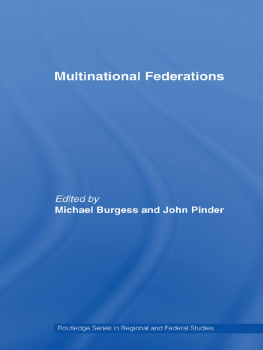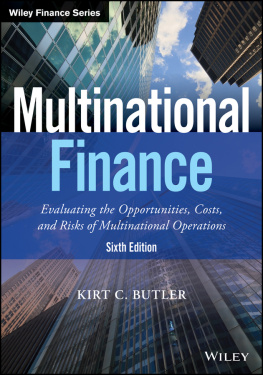The Rise of Asia
After the current financial-economic crisis, the world will have a completely different outlook. Three developments will be decisive in this respect. First of all, the leadership of the United States, the undisputed leader of the second half of the twentieth century, will no longer be self-evident. In addition, the integration process of the European Union and especially that of the Eurozone has come to a standstill, and maybe worse, is on the brink of destruction. Finally, yet importantly, the global economic center of gravity is shifting more rapidly than expected from the West to the East. All of this means that the twenty-first century may very well be the Asian century.
If that is the case, then Asia will soon reshape the global political-economic landscape. This undoubtedly will result in a change in the global power centerboth soft and hardfrom the West to the East. In global business, interactions between Asia and the West will most likely intensify. In the West, we will encounter Asian values more than before in our working environment: business cultures and conventions that are so different from ours, based as they are on a completely different philosophy and another outlook on life. Is the West prepared for these encounters that are going to happen on a more frequent basis?
Many members of the Asian elite have given negative answers to this question. For example, the former top diplomat and current dean of the Lee Kuan Yew School of Public Policy at the National University of Singapore, Kishore Mahbubani, recently mentioned that no country has done more than the United States to spark the rise of Asia. But paradoxically, America is among the countries least prepared to handle the rise of East Asia.
High growth, rapid industrialization, economic reforms and the gradual opening of domestic markets to foreign competition characterize the economic development path of emerging Asian economies. Asias high growth combined with its vast market potential and large diversified labor pool has made it a favored investment location for Western companies. The influx of FDI has generated positive spillover effects in Asian economies. Asian firms were quick to absorb knowledge, technology and best practices from foreign firms to enhance their own operational capacities and build up their domestic market share. In addition, Asian firms have increased their ability to read trends in global markets and make the most of the endowments provided by their domestic environment to climb up the global ranks. Many Asian governments actively require and stimulate outbound activities of companies and are gradually cutting away the red tape that (formerly) impeded cross-border investments.
During the economic downturn in 2008, many Asian economies demonstrated great resilience, quick recovery and stable economic growth. Furthermore, the volume and global share of Asian cross-border investments continued to grow despite the dominant downward trend in global OFDI. Although the overall share of Asia in global OFDI is still relatively small, predictions are that it will increase based on Asias current economic growth levels and a possible upcoming recession in Europe and North America.
Growth in the Asian Hemisphere
2.1 China
The most eye-catching feature of Asias economic ascent is the rise of China. Since the gradual opening up of the Chinese economy in 1978, economic growth rates have averaged nearly 10 % per year. According to forecasts, economic growth levels in China will persist, be it at levels significantly less than 10 %, and China could overtake the United States as the worlds largest economy (by GDP) by 2020.
Although market forces have entered China, the government still exerts great influence on the economy. The initial economic success of China lies primarily in using economies of scale to their advantage. A large and diversified labor pool and considerable inward investment have been important factors for China in becoming a powerful source of low-cost manufacturing and industrial exports in the world. The Chinese government intends to diversify its economy and develop more knowledge- and technology-intensive economic activities. Chinese exports and outward FDI have grown explosively, especially after China joined the WTO in 2001. Government incentives have assisted Chinese companies in establishing a global footprint. Large greenfield investments of State-owned enterprises (SOEs) have sprouted in Central Asia, Latin America and Africa to safeguard resources and energy supplies for Chinas industries. The number of Chinese companies (mainly SOEs) acquiring European and North American targets in high-tech, manufacturing and raw materials has grown exponentially to secure intangible assets, knowledge and technology.
2.2 India
Although still a poor country with vast socio-economic problems, India has managed to become the ninth largest economy in the world since economic liberalization in 1991. Between 1990 and 2010, the annual average growth rate of the Indian economy was 6.6 %. For an emerging economy, India has well-developed services and ICT industries which have showcased remarkable growth over the years. Indian ICT companies have been quick to embrace overseas clientele and business opportunities and have created a low-cost niche in the global ICT market. They derive the majority of revenues from services and software exports to developed markets.
Although service exports are booming, India has a trade deficit due to large importation of commodities. To improve its trade situation, India is negotiating various free trade agreements. Indian OFDI and M&A have surged since restrictions on outward investment and cross-border acquisitions have been loosened. Indian OFDI is mainly concentrated in the manufacturing sector followed by services and wholesale/retail activities. Favored investment destinations are Singapore, the Netherlands, United Kingdom, United States, various tax havens and the Middle East.
Indian greenfield investment mainly concerns mining, construction and heavy manufacturing activities in developing nations, often resource-rich countries. Indian outbound M&A has skyrocketed. Conglomerates have been especially keen to acquire foreign firms to gain market access and intangible assets. Indian outbound M&A activity is concentrated in developed nations manufacturing sector and, to a lesser extent, in services.










